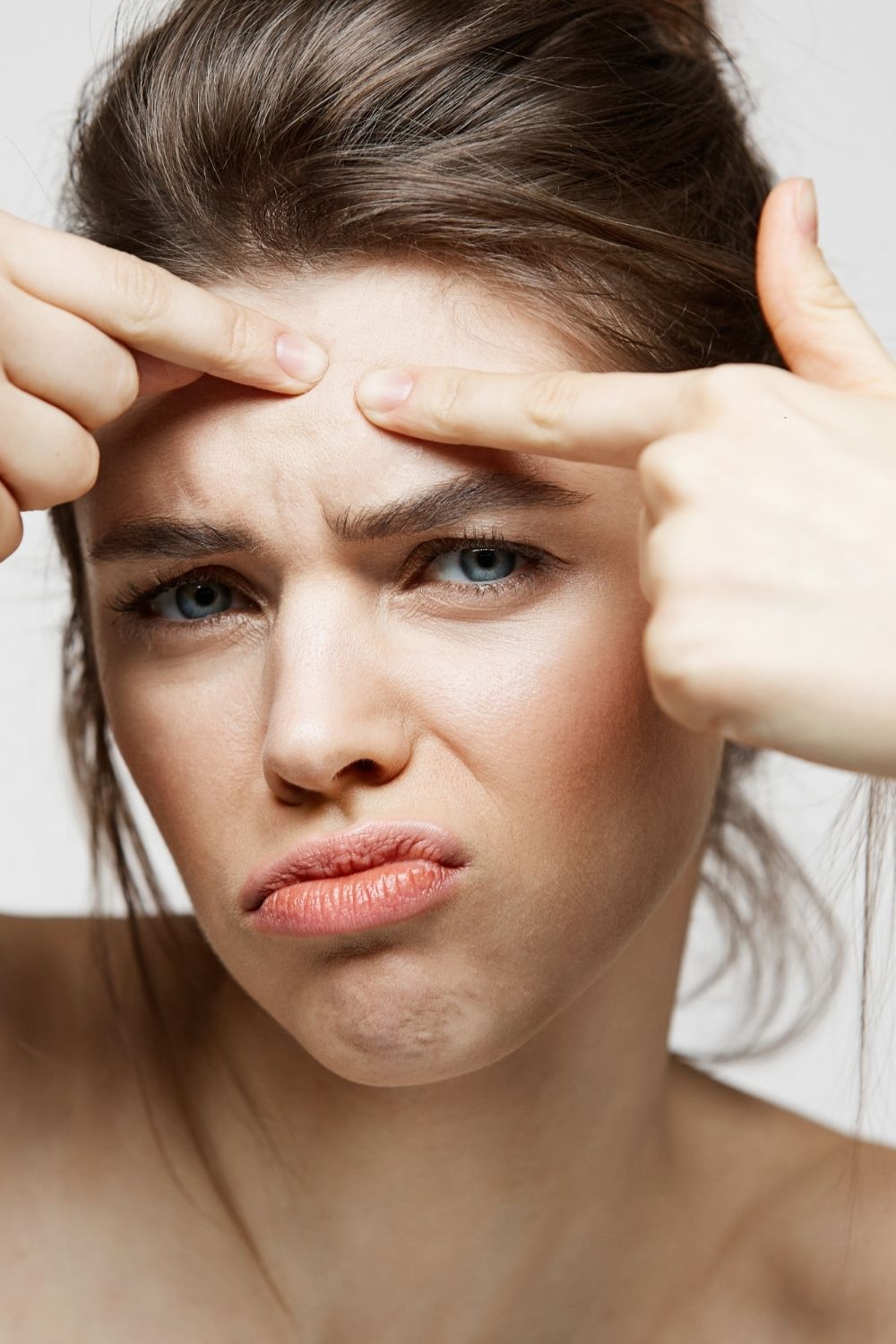It was a messy, strenuous year in more ways than we can count, and that stress is showing up everywhere — even our backs.
The cherry on top of this unprecedented, difficult year is actually more like a cyst. Or a whitehead. Or a blackhead. As many readers have discovered firsthand, periods of stress can lead to an increase in a stress hormone called cortisol, which in turn causes breakouts — and not necessarily on the face.
Pandemic stress-induced acne, including the “maskne” caused by our face coverings, have driven the skin-care discussion this year. But a more overlooked (perhaps because it’s quite literally unseen) rise in body acne seems to be occurring parallel to the new bumps on our faces.
“I have seen a surge in both facial and body acne during this pandemic. Acne has been one of the most common complaints in my practice recently,” says New York City-based board-certified dermatologists Whether you’ve recently spotted the unpleasant surprise of a pimple in a brand new place or have long been dealing with body acne, dermatologists say that there are plenty of ways to eradicate breakouts on the chest, back, butt, and legs.
What is body acne?
Body and facial acne have similar underlying causes. Zits pop up as a result of excess oil production, clogged pores, and inflammation, among other factors, which are caused by things like individual genetics, hormones, and stress.
But just because you get cystic acne on your chin or whiteheads around your nose doesn’t necessarily translate to the type of breakouts you’ll see on the body. “Body acne tends not to show up as frequently as blackheads, but instead can be whiteheads, pimples, and cysts.
Body acne often occurs in areas that can get oily, like the center of the chest and upper back. “Higher oil levels make an ideal environment for bacteria to grow, leading to inflammation and subsequent acne. “The buttocks are also a common area due to irritation from sweating and tight-fitting clothes. Legs can be prone to acne after shaving due to irritation around hair follicles.”
Acne on the chest and back is called folliculitis, and it comes from pores that are clogged with oil, dead skin, or other debris, resulting in inflamed hair follicles that appear as small red bumps. Dermatitis, an irritation of the skin sometimes caused by clothing friction combined with sweat, can also lead to breakouts.
And just because you get facial breakouts doesn’t necessarily mean you’ll also see bumps elsewhere on the body, and vice versa. “Body acne can be completely separate from acne on the face.
Why are you breaking out all of a sudden?
From the emotional to the physical, pandemic-related issues are contributing to the rise in acne.
For one, there’s the lifestyle change. “You’re sitting, and there’s more friction on your butt, which can lead to butt breakouts. All that rubbing of butt on couch can irritate the skin and lead to breakouts.
The rise of at-home workouts isn’t helping, either. More time spent in sweaty clothes (because who’s changing right after a workout anymore?), and then sitting in those sweaty clothes on the couch, can cause clogged pores.
There’s also the fact that many of us, for various reasons, aren’t taking as much care of our skin as we used to. “People are exhausted, mentally and physically,. “I’ve been in athleisure since March, and I think the same [thinking applies to] skin care. People aren’t taking care of their skin, because they’re like ‘I can’t deal.'” Forget bells and whistles like sheet masks (or butt masks), people are also showering less, which can lead to oil buildup on the body. Others are showering more, which can lead to irritated skin.
Diet is also contributing to newfound body breakouts. “If you are like me, while sitting at home, you may be grabbing for those donuts, ice cream, and wine. Pandemic-related poor diet may be exacerbating your acne. “Studies show that high glycemic diets (high sugar and carb foods) and dairy may worsen acne.”
Lastly, there’s the emotional toll that this year has taken. “Pandemic-related stress may contribute to acne flares,” Chang continues. “Stress induces the activation of the hypothalamic-pituitary-adrenal axis and elevates cortisol levels in the body. Stress has been shown to promote oil production and increase inflammation in the skin, in turn, causing acne flares.”





